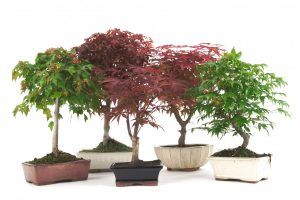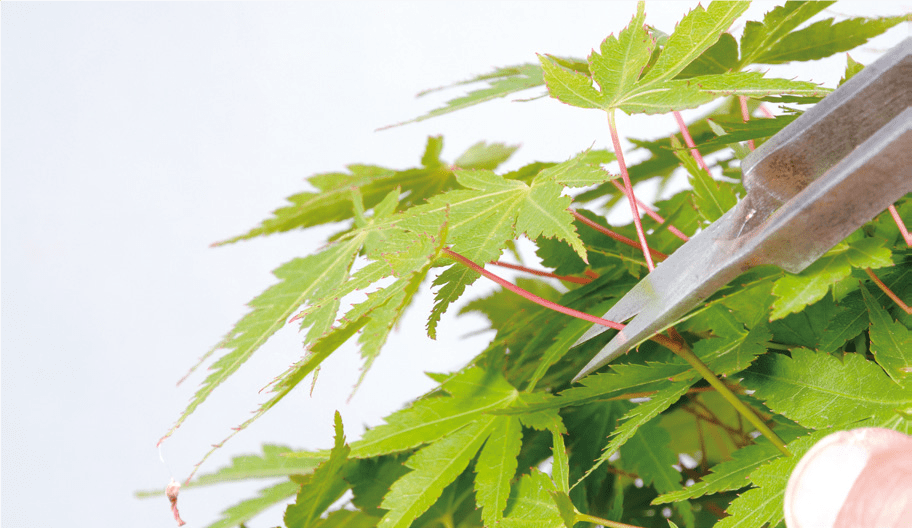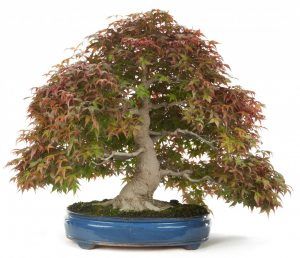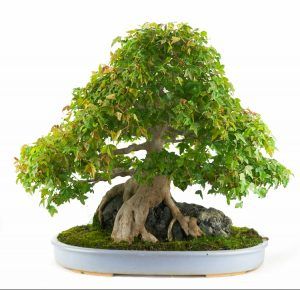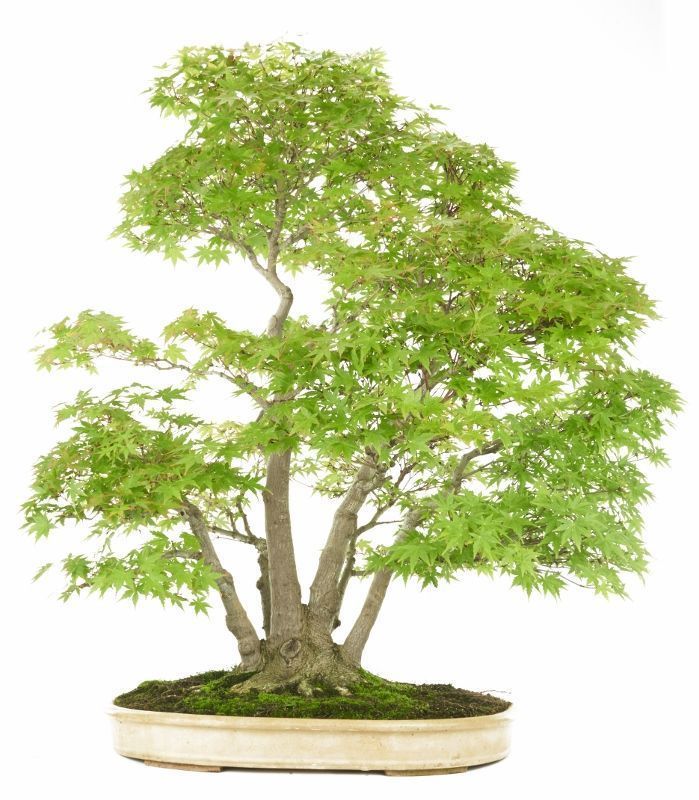How to care for your maple bonsai and not die trying
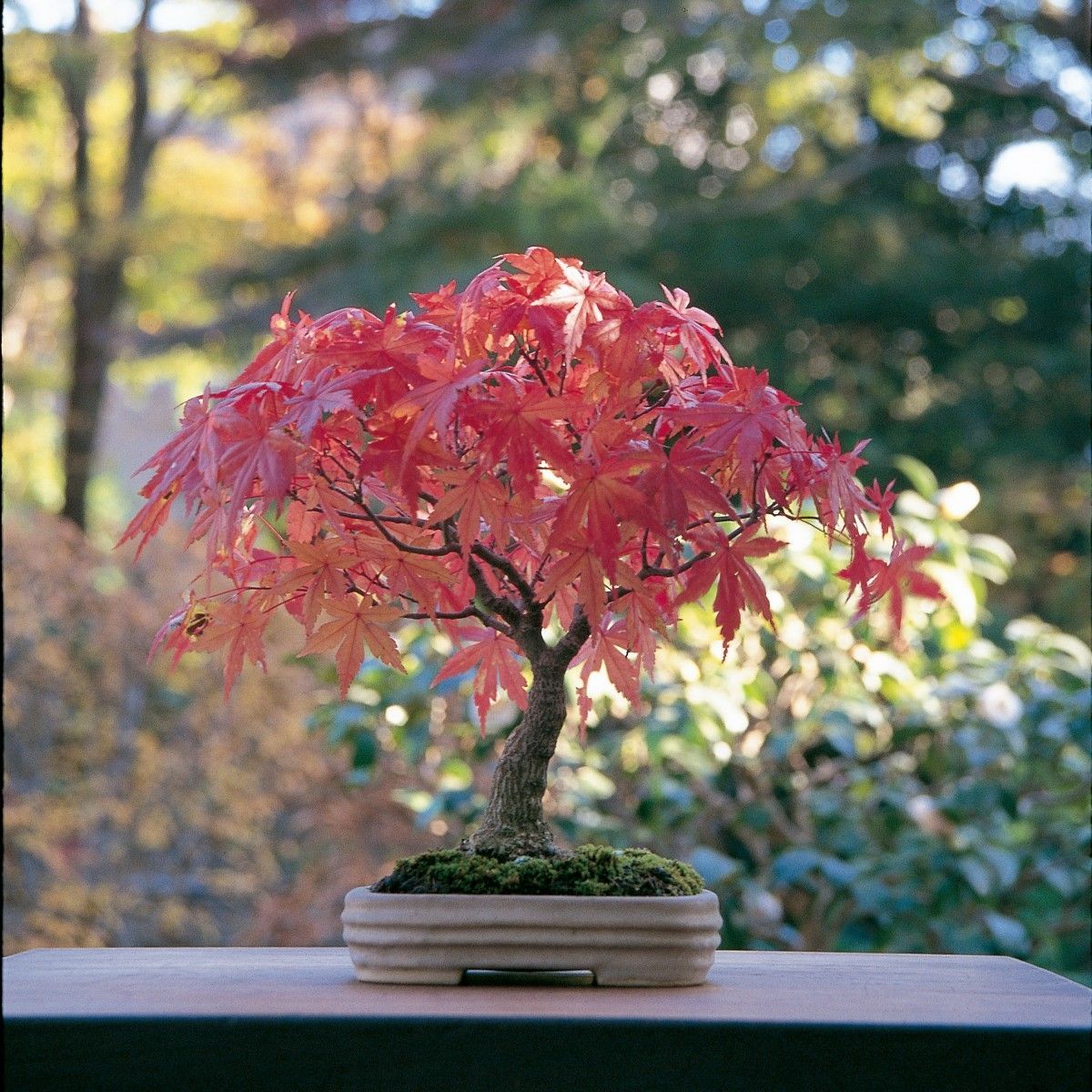
The spectacular red of the maples is, without a doubt, one of the reasons that push us to delve into the world of bonsai. One of the most popular species for bonsai, apart from pines and junipers, is the maples family. Today we explain everything you need to know to take care of your maple bonsai and not die trying.
Maples, a very popular family in bonsai
The maples family is widely distributed throughout the world and there are different varieties. Maples are deciduous species; they are generally not large in size and are fast growing. Maples are commonly grown as ornamental trees in parks, streets, and gardens. Syrups are also made from them, and their wood is used in construction.
The characteristic of this family is the type of leaf, which is visually very beautiful, and its autumn coloration changes. Its botanical name, acer, comes from the Latin ǎcěr, -ĕris (sharp), referring to the characteristic tips of the leaves or to the hardness of the wood that, supposedly, would be used to make war spears.
In addition, there are several points that all of us who are passionate about bonsai appreciate:
- With the application of the defoliation technique, the leaves greatly reduce their size, achieving a good proportion in your bonsai.
- They have a vigorous and rapid growth
- They have an extraordinary ability to branch and generate many branches. This is a blessing when it comes to design.
- You can play with its autumn colouring and contrast it with the colour of the pot.
Where to place maple trees at home
In a Mediterranean climate, they should be placed outdoors, in broad sun all year round. To avoid burns on the tips of the leaves, it is advisable to protect it in summer from the intense midday sun.
Maples do well between a climatic range of 20ºC and 5ºC, thus in summer they must be protected from direct sun to avoid burning the leaves and they must be pulverised. In colder climates, you should protect Maples from frost.
Proper watering, one of the most essential elements
Abundantly in summer and moderate in winter. It is convenient to pulverise the leaves with water during the summer, since it requires environmental humidity. But the irrigation technique must be applied correctly as in our other bonsai. Here you can brush-up the steps of how to water correctly.
How to fertilise
The fertiliser must get done in two periods. We will begin to fertilise with products rich in nitrogen (these fertilisers are called growth fertilisers) and are used from the beginning of spring until the temperature rise in summer (35º C). Then we let the trees rest. When the temperature begins to drop in the summer and until the end of autumn, we will fertilise with products rich in Phosphorus and Potassium, which are the macronutrients that our bonsai needs at this time. The ideal is to combine organic solid fertilisers with liquid fertilisers.
Pruning and nipping a bonsai acer
Pruning is always recommended at the beginning of spring and nipping is done by cutting the shoot and leaving only the first two leaves. If it has been allowed to lengthen, cut one or two pairs of leaves. Nipping is carried out throughout the growth period to define the silhouette well.
Repotting
The transplant due to its rapid growth should be done every two years. As for the substrate, we recommend Terrabonsai. A substrate specially developed by Mistral Bonsai technicians. Helps keep your tree healthy, with the necessary moisture retention and proper drainage for its development. If you already have experience with maples and master the irrigation technique, you can use 100% Akadama or 70% Akadama and 30% Kiryuzuna as an alternative. It develops a radical system faster, although it requires greater control in irrigation.
When to wire a maple bonsai
You can do the wiring all year round, especially in spring and autumn. As the maples are delicate in their ramification, a good wiring in spring, where the circulation of sap is greater, will allow us to bend the branches more and reach the silhouette we have in mind. In autumn, we can correct the design because the trees lose their leaves and we can see more of the branches and their direction.
Maple bonsai styles
Maples can be worked on all styles of bonsai, but I must say that, in my experience, there are 3 styles that are classic in Maple trees; The Moyogi, the Ishizuki and the Yosu-ue.
Who has not seen a Maple in Moyogi or informal style. With the lines of the trunk as delicate curves, its thin upper branches and its mass of foliage well-ordered like the image:
The Ishizuki or root on stone style is perhaps the most used and the one that, in my opinion, is the most impressive in this species. Seeing strong roots embracing the stone, a powerful nebari, a pale grey trunk rising and ending in many fine branches with leaves of peculiar shape, is undoubtedly a spectacle:
Another style that is traditional in this family is the Yosu-ue or Forest style. In this style, the variety of the thickness of the trunks, its pale grey colour and its thin ramification make it a wonderful composition of a forest that invites us to visit.
As you can see, the maple family is wonderful for bonsai. Try it, your bonsai collection will grow in attractiveness and quality with one of these wonderful trees.
Until next time…
Categories
Bonsai cultivation and care (54)
Bonsai gift (2)
Bonsai pests and diseases (6)
Bonsai repotting (3)
bonsai substrates (2)
bonsai tools (1)
Bonsai work (10)
Ceramic pots (3)
Chinese culture (2)
Chinese culture (1)
Corporative Mistral Bonsai (8)
Cuidados del bonsái (22)
Cultivo del bonsái (20)
Dead wood (2)

